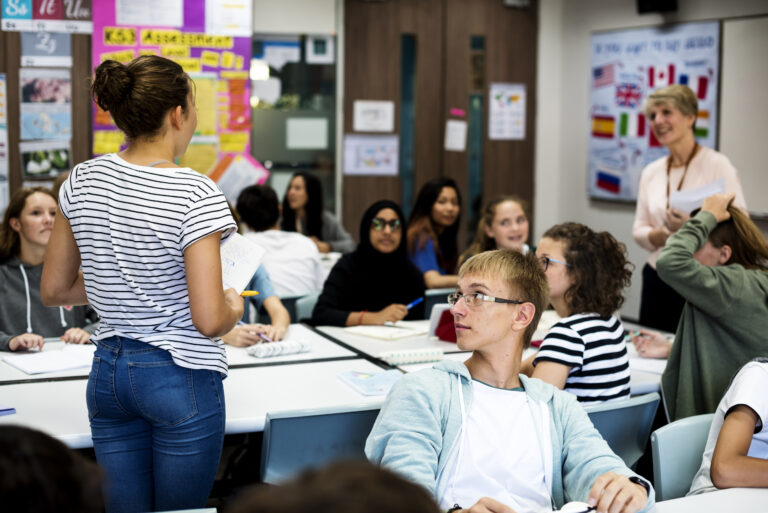
One of the reasons I enjoy working in schools is the way they bring people of all ages, backgrounds and experiences into a shared community. While families, students and staff may be united by common values – such as religion, educational philosophy or residential zones – schools are also a reflection of the rich diversity of society, insomuch, they are home to a wide range of perspectives, personalities and experiences. It’s these differences that make them vibrant and dynamic places to learn and grow.
Ideally diversity enables and supports a school community to thrive and often reflects the broader community and people’s experience of it. It makes sense then that conflict is a natural part of any school setting, just as it is a natural part of life and the human experience.
Yet conflict is frequently viewed as something to be avoided, ignored or inherently disruptive and when left unaddressed or poorly managed, it can create tension, strain relationships and contribute to a culture of shame, avoidance, hostility, anxiety and stress for students, teachers, parents and school administrators.
Despite its negative connotations, conflict within schools presents an opportunity to strengthen communication, deepen understanding and connection, and serve to reinforce a sense of community. By working within a clear and supportive framework for experiencing and navigating conflict, schools can transform tension into opportunities for growth.
Schools are diverse environments, and as in any community, differences in opinions, needs and expectations can naturally lead to disagreement. This isn’t a sign of dysfunction – it’s simply part of human interaction and the reality of interpersonal relationships.
While conflict is a universal experience, the ways that people perceive and engage with it differs widely. Too often, individual behaviours in conflict situations are reactive and instinctive, leading to disconnection and the unintentional escalating of issues. Without guidance, support or a clear framework to work through different perspectives, conflict can become entrenched, creating division rather than connection.
The unique opportunity for schools is to acknowledge conflict as a natural part of school life and equip students and staff with the skills, shared language and permission to navigate it in a way that is intentional and considered, and by prioritising understanding and connection as an end goal. Importantly, the goal isn’t about ‘winning’ or reinforcing an ‘us vs. them’ mentality of opposing sides – it’s about empowering school communities with knowledge and tools to approach challenges in interpersonal relationships in a way that emphasises communication and seeks understanding, leading to a more connected and resilient school environment.
In many scenarios, conflict is pathologised and seen as something to be avoided, suppressed or feared. By acknowledging conflict and supporting students, staff and families to work through conflict, schools can lead an important shift in collective and individual mindsets – creating a culture where conflict is recognised as a natural part of school life and an opportunity for students to develop important interpersonal skills they will carry beyond school into their work, domestic and wider community lives. Conflict management skills are life skills, and the earlier we can understand and utilise such skillsets, the better, because for most people life becomes more, not less complicated as we get older.
The shift in how we approach and work through conflict is supported with a clear framework, like PARC, that offers a whole-school approach to conflict for parents, staff and students. Through a shared language and understanding, a universal framework helps drive real transformation and sustained growth. When conflict is acknowledged, approached with curiosity rather than defensiveness, and given space to be worked through and better understood, it shifts from being a source of division to an opportunity for growth. Rather than treating conflict as something to be “managed” in isolation, PARC helps schools cultivate a shared mindset, tools and confidence to turn conflict into a pathway for stronger relationships and a more connected school community.
So how can schools introduce an approach to conflict in a way that is practical and sustainable?
By shifting the way schools view and handle conflict, we create an environment where people feel heard, supported and empowered. Instead of conflict being a source of division, it becomes a pathway to stronger relationships, clearer communication, and a more connected school community.
Conflict has the power to either divide or connect – the difference lies in how we talk about, experience and approach it. Schools that embed conflict competence into their culture create an environment where differences are acknowledged, respected and worked through constructively. Instead of driving division, difficult conversations become opportunities for deeper understanding and stronger relationships.
Achieving this shift requires more than just good intentions – it needs a shared language & understanding, a clear framework and a consistent approach. When students and staff know what to expect, feel supported and trust the process, conflict no longer feels threatening or unpredictable. Over time, this builds a stronger, more connected school community – one where conflict is about learning, understanding and moving forward together.
To learn more about how the PARC Program can help your organisation contact us at:
Email: [email protected]
Author: Kris Darmody